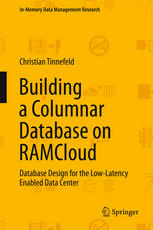

Most ebook files are in PDF format, so you can easily read them using various software such as Foxit Reader or directly on the Google Chrome browser.
Some ebook files are released by publishers in other formats such as .awz, .mobi, .epub, .fb2, etc. You may need to install specific software to read these formats on mobile/PC, such as Calibre.
Please read the tutorial at this link: https://ebookbell.com/faq
We offer FREE conversion to the popular formats you request; however, this may take some time. Therefore, right after payment, please email us, and we will try to provide the service as quickly as possible.
For some exceptional file formats or broken links (if any), please refrain from opening any disputes. Instead, email us first, and we will try to assist within a maximum of 6 hours.
EbookBell Team

4.3
58 reviewsThis book examines the field of parallel database management systems and illustrates the great variety of solutions based on a shared-storage or a shared-nothing architecture. Constantly dropping memory prices and the desire to operate with low-latency responses on large sets of data paved the way for main memory-based parallel database management systems. However, this area is currently dominated by the shared-nothing approach in order to preserve the in-memory performance advantage by processing data locally on each server. The main argument this book makes is that such an unilateral development will cease due to the combination of the following three trends: a) Today’s network technology features remote direct memory access (RDMA) and narrows the performance gap between accessing main memory on a server and of a remote server to and even below a single order of magnitude. b) Modern storage systems scale gracefully, are elastic and provide high-availability. c) A modern storage system such as Stanford’s RAM Cloud even keeps all data resident in the main memory. Exploiting these characteristics in the context of a main memory-based parallel database management system is desirable. The book demonstrates that the advent of RDMA-enabled network technology makes the creation of a parallel main memory DBMS based on a shared-storage approach feasible.